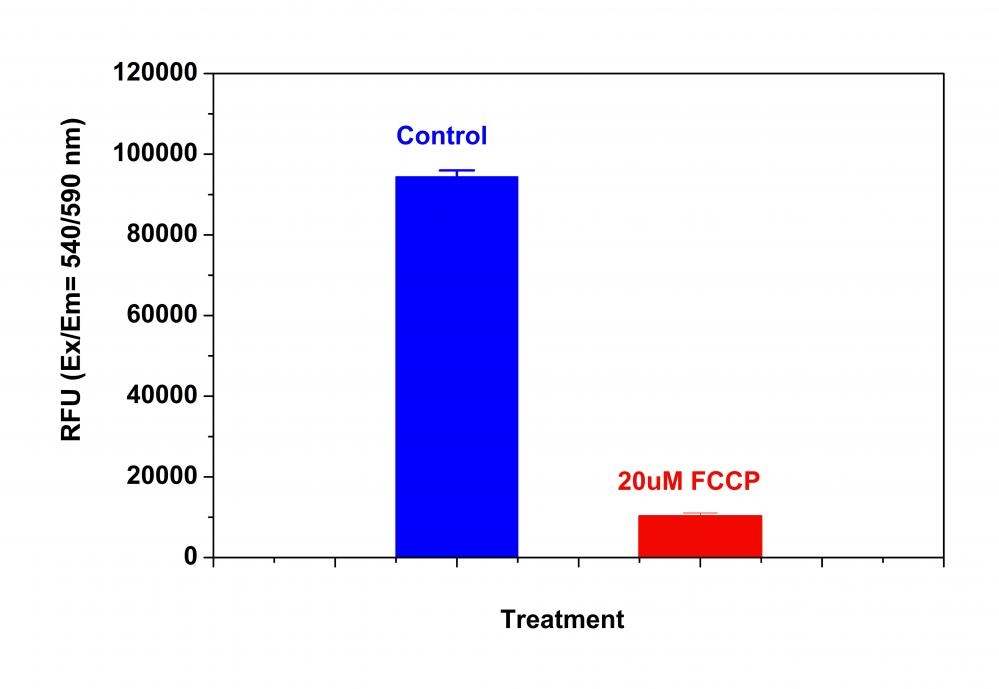Cell Meter™ Mitochondrion Membrane Potential Assay Kit
Orange Fluorescence Optimized for Microplate Reader
Our Cell Meter™ assay kits are a set of tools for monitoring cellular functions. There are a variety of parameters that can be used. This particular kit is designed to detect cell apoptosis by measuring the loss of the mitochondrial membrane potential (MMP). The collapse of mitochondrial membrane potential coincides with the opening of the mitochondrial permeability transition pores, leading to the release of cytochrome C into the cytosol, which in turn triggers other downstream events in the apoptotic cascade. This fluorimetric assay uses our proprietary cationic MitoLite™ Orange for the detection of the mitochondrial membrane potential change in cells. In normal cells, the orange fluorescence intensity is increased when MitoLite™ Orange is accumulated in the mitochondria. However, in apoptotic cells, the fluorescence intensity of MitoLite™ Orange is decreased following the collapse of MMP. Cells stained with MitoLite™ Orange can be fluorometrically monitored. Our Cell Meter™ Orange Mitochondrial Membrane Potential Assay Kit provides all the essential components with an optimized assay method. The kit can be used for screening activators and inhibitors of apoptosis. And the assay can be performed in a convenient 96-well and 384-well fluorescence microtiter-plate format without a wash step.


| Catalog | Size | Price | Quantity |
|---|---|---|---|
| 22805 | 500 Tests | Price |
Storage, safety and handling
| H-phrase | H303, H313, H333 |
| Hazard symbol | XN |
| Intended use | Research Use Only (RUO) |
| R-phrase | R20, R21, R22 |
| UNSPSC | 12352200 |
Instrument settings
| Fluorescence microplate reader | |
| Excitation | 540 nm |
| Emission | 590 nm |
| Cutoff | 570 nm |
| Recommended plate | Black wall/clear bottom |
| Instrument specification(s) | Bottom read mode |
Documents
Contact us
| Telephone | |
| Fax | |
| sales@aatbio.com | |
| International | See distributors |
| Bulk request | Inquire |
| Custom size | Inquire |
| Technical Support | Contact us |
| Request quotation | Request |
| Purchase order | Send to sales@aatbio.com |
| Shipping | Standard overnight for United States, inquire for international |
Page updated on December 17, 2025
